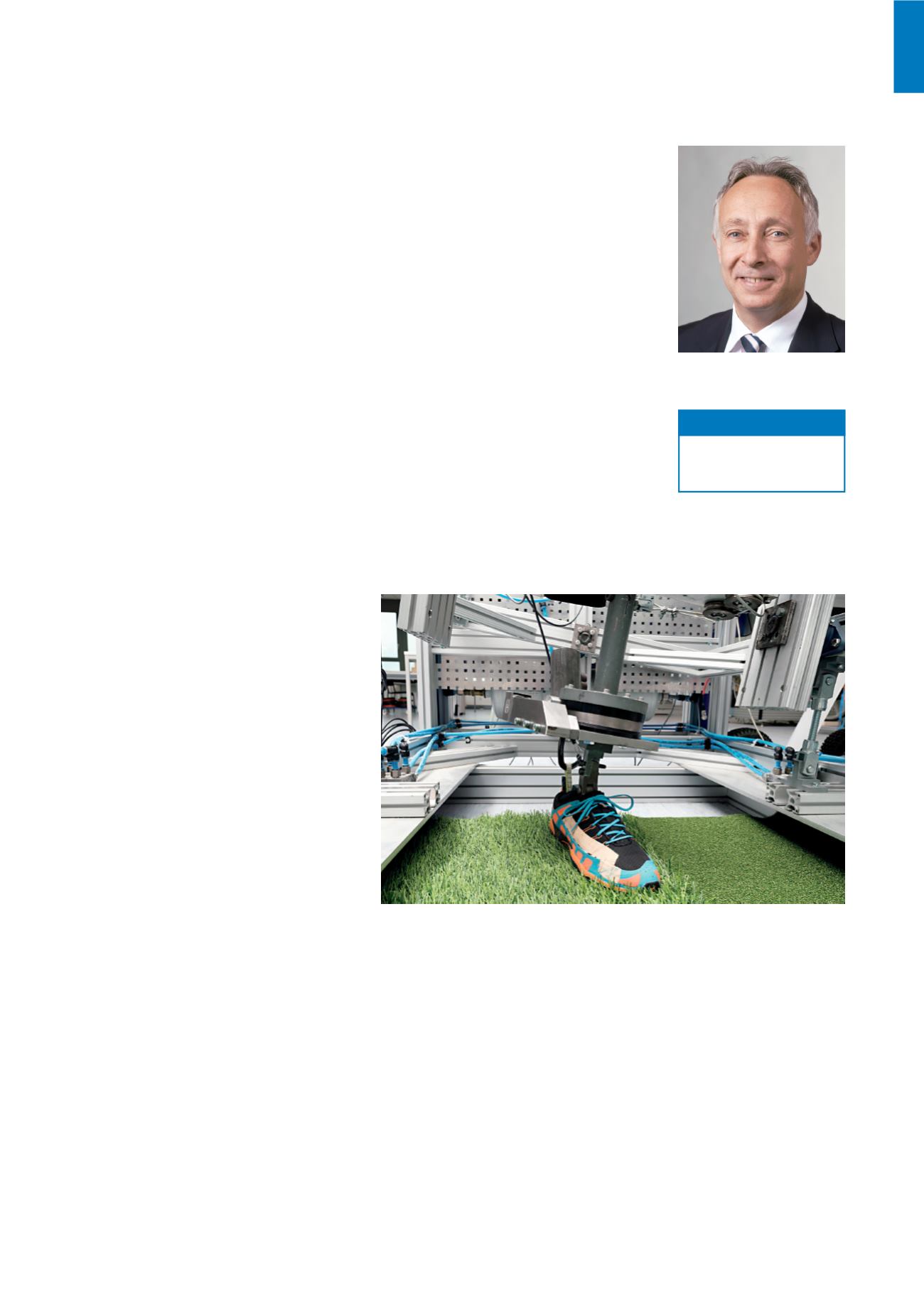

Sport Equipment and Materials
247
Sport Equipment and Materials
R&D in sports technology combining engineering, sports science and computational methods
Prof. Dr.-Ing. Veit Senner
Towards Better Performance with
Optimized Sport Equipment
Improving the performance in both
top level and leisure time sports is one
motivation for our work. The focus is on
optimizing the energy transfer between
athlete and equipment and on reducing
the inherent energy loss. On the equip-
ment level we try to achieve this by:
n
improved fitting to the individual
(i.e. golf shaft),
n
better weight to stiffness ratio
(i.e. bicycle frame),
n
using energy storage and return effects,
n
optimized heat- and moisture manage-
ment of sports garments (i.e. new infills
for down jackets).
One example of our 2016 research in
this field is an investigation on traction
behavior of trail running shoes.
Trail running is typically practiced under
extreme boundary conditions with
the ground being sometimes muddy,
sometimes with gravel, sand, grass or
even ice and snow. As trail running is
often performed in terrain where deep falls
are possible, traction is not only a matter
of performance but also of safety. To
objectively compare the traction behavior
of different shoe soles and materials we
use a specially designed biomechanical
testing device, the so-called TrakTester.
n
A holistic approach to understand the interaction between athlete,
equipment and environment requires knowledge in material science,
biomechanics, physiology and even psychology. For this reason we
continued to build up collaborations with different TUM research facilities.
Just to mention a few of them, we now work together with our Biopolymer
group in Straubing, with the Departement or Prevention, Rehabilitation
and Sports Medicine and with the Chair of Psychology at TUM School of
Management.
www.spgm.tum.de senner@tum.dePhone +49.89.289.15366
Contact
From our 2016 research activities four
highlights are worth mentioning:
n
Successful termination of our 3-year
research project on the heart rate
controlled electric bicycle ‘QUADRAD’.
n
Proof of concept of a new method to
non-invasively measure the athletes’
core temperature.
n
Publication of a patent on energy
harvesting by the athletes’ motion and
patent on emergency release for winter
sport equipment licensed by a German/
Russian company.
n
Design and evaluation of a head
cooling system for helmets.
A silicone foot mounted on the testing
device simulates the forces which act on
both foot and running shoe. The artificial
foot can be maneuvered into all positions
that are typical of athletic movements and
put to the test as part of the experiment. A
multi-component measuring cell registers
the force and torque delivered to the leg.
These laboratory measurements are
usually combined with standardized field
tests. Professionals and non-professional
experienced runners give their subjective
ratings on a set of carefully selected items
which characterize the functionality of the
sport equipment in test.
TrakTester measurement of trac-
tion loads with various different
surfaces and with the foot and
lower leg at various different
angles (Image: Uli Benz / TUM)


















